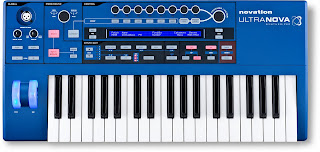In 1963, the music world changed. I don’t mean with the release of “She Loves You,” the breakthrough single by The Beatles. No, what transformed everything was the “Doctor Who Theme”, written by Ron Grainer and realized by Delia Derbyshire. Delia’s work on the theme represents a seismic musical shift, in that she took electronica out of the confines of academia and brought it into peoples’ homes. As important, the theme had elements that had been noticeably missing from electronic music up to that point: rhythm and melody. In other words, an actual “song” that people could relate to. Sure, Stockhausen, Schaeffer and others were hugely influential at the time, but you can’t actually hum along to one of their tunes. Experimental and avant-garde music have a place, but most of us do not listen to music while stroking our beards and nodding approvingly through clouds of pipe smoke at the use of:
(1) a scale of twelve tempos analogous to the chromatic pitch scale, (2) a technique of building progressively smaller, integral subdivisions over a basic (fundamental) duration, analogous to the overtone series, (3) musical application of the concept of the partial field (time fields and field sizes) in both successive and simultaneous proportions, (4) methods of projecting large-scale form from a series of proportions, (5) the concept of "statistical" composition, (6) the concept of "action duration" and the associated "variable form", and (7) the notion of the "directionless temporal field" and with it, "polyvalent form" (Stockhausen Texte 1:99–139).
(If anyone can translate this into a comprehensible form of English, I would be appreciative.)
Now we have a song. Unfortunately, for many, there were limited means to create anything similar because commercial synthesizers were still in their infancy. So, it is back to playing with conventional instruments. However, as the Sixties progressed, a number of groups began to use conventional instruments to create unconventional music. Of these, one group in particular provides the vital link between Delia and Krautrock: Pink Floyd. For those of you unfamiliar with early Floyd, start from album 1 of Ummagumma and work backwards. Then listen to Tangerine Dream’s Electronic Meditations (the first album to emerge from the Berlin underground). Actually, don’t, because at this point TD sounds like a third-rate Pink Floyd cover band. As further evidence, Mason’s drumming on “Set the Controls for the Heart of the Sun” gets lifted almost in its entirety by Chris Franke on Atem and Part 1 of Ricochet.
Furthermore, two Floyd songs lay the groundwork for what will become an essential part of the Berlin School. The first of these is “One of These Days” (Meddle, 1971), which not only borrows heavily from the Dr. Who theme for the bassline, but also directly quotes from theme at several points The second is “On the Run” (Dark Side of the Moon, 1973), probably the first song to be sequenced using a VCS3, more specifically the AKS. Conveniently enough, the first ever VCS3 was used by Delia, who was a good friend of Peter Zinovieff, the creator of EMS. The VCS3 was the first relatively cheap (retailed for £330 in 1969, but don’t look at the prices the originals command today unless you are prepared for the ensuing heart attack) commercial synthesizer: not surprisingly, it shows up most electronic Krautrock records from the early 70s.
These two Floyd songs are proto-Berlin School: simple, repetitive sequences over-laid with soloing. However, these Floyd songs and early Berlin School all lack that vital element that made the “Doctor Who Theme” memorable: melody. We had music, but we still didn’t have tuneful songs. What was needed was marriage between sequencing and melody; or, perhaps, melodic sequencing. What we needed was Kraftwerk’s masterful “Europe Endless” (Trans Europe Express, 1977). Granted, by 1977, the technology to achieve such beauty was finally available: the synth revolution had, by this time, started to gain ground. Yet, synth music was still a novelty on the Pop Charts. Gary Wright’s Moog-heavy Dream Weaver reached #2 on the charts in 1976, but, in essence, the songs were just conventional pop that featured synths: it wasn’t synth-driven pop. Explains why Gary Wright is hardly ever referred to as a synth pioneer. On the other hand, every keyboard player from the first generation of British synth-pop was a Kraftwerk fan.
Before being accused of narrow-mindedness, another song from 1977 needs mention, and who better to describe it than David Bowie:
"One day in Berlin ... Eno came running in and said, 'I have heard the sound of the future.' ... he puts on 'I Feel Love', by Donna Summer ... He said, 'This is it, look no further. This single is going to change the sound of club music for the next fifteen years.' Which was more or less right."
Giorgio Moroder, conveniently for this conversion, started his music career in Berlin.
Bless you, Delia.








